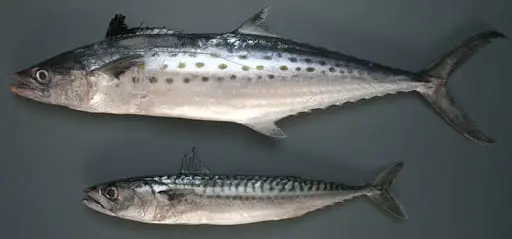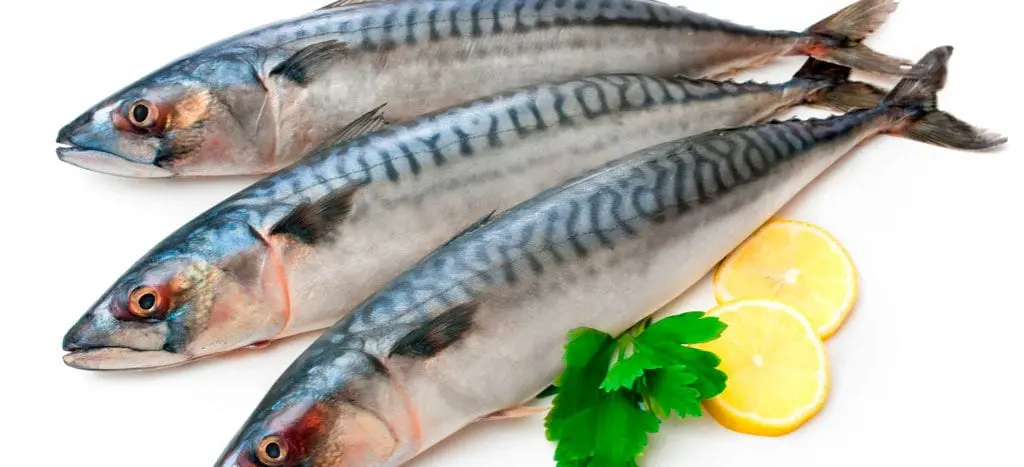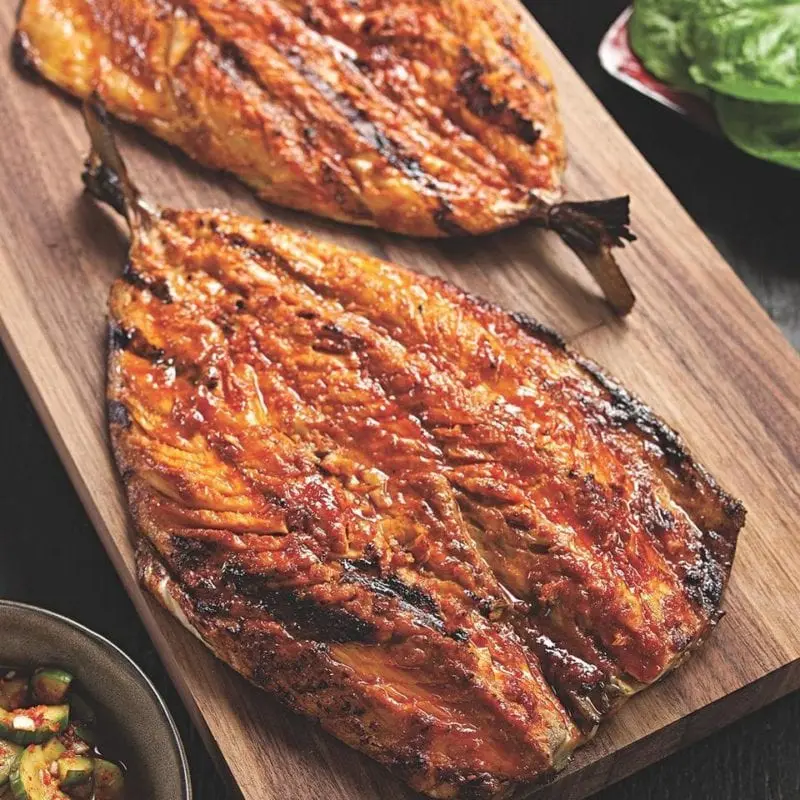Contents
Mackerel is a fish from the Mackerel family. The key difference of the fish is that mackerel has not red but gray meat; it is thicker, larger, and after cooking, it turns out coarser and drier than relatives. Outwardly, they are also different; if the belly of the mackerel is silvery, then another fish is gray or yellow with specks and stripes. Mackerel is good fried, baked, boiled, as a part of the soup, and added to salads; for barbecue, it is perfect.
History
This fish was popular among ancient Romans. In those days, fish was much more expensive than regular meat. Many tried to breed it in ponds, and the owners of wealthy estates even equipped piscinas (cages with seawater carried through canals). Lucius Murena was the first to build a special pool for fish farming. In those days, mackerel was popular boiled, stewed, baked, fried on charcoal, and grilled, and they even made fricassee. Garum sauce, which they made based on this fish, was trendy.
Calorie content of mackerel

A large amount of fat in mackerel raises doubts about the low-calorie content. And therefore, it is very rarely used in dietary nutrition. But this is just a psychological aspect since it is complicated to get fat from mackerel. Indeed, even the fattest fish will have much fewer calories than any flour foods or cereals.
So, raw fish contains only 113.4 kcal. Spanish mackerel, cooked in the heat, has 158 kcal and only raw – 139 kcal. Raw king mackerel contains 105 kcal and cooked over the heat – 134 kcal. We can conclude that this fish can be safe during a diet since no cereal can replace the huge amount of nutrients of this fish.
Nutritional value per 100 grams:
- Protein, 20.7 g
- Fat, 3.4 g
- Carbohydrates, – gr
- Ash, 1.4 gr
- Water, 74.5 g
- Calorie content, 113.4
Beneficial features of mackerel
Mackerel meat contains many easily digestible proteins, fish fat, and various vitamins (A, E, B12). It contains useful trace elements: calcium, magnesium, molybdenum, sodium, phosphorus, iron, potassium, nickel, fluorine, and chlorine. Eating this meat brings a positive effect on the heart, eyes, brain, joints, and blood vessels. Nutritionists claim that mackerel meat can significantly lower cholesterol levels.

How to choose mackerel
Choose the fish only with clear, transparent eyes and pink gills. When you apply pressure to the carcass with your finger, the dent should immediately smooth out. Fresh mackerel has a weak, slightly sweetish odor; it should not be unpleasant or strongly fishy.
The appearance of the fish should be wet and shiny and not dull and dry, and the presence of traces of blood and other stains on the carcass is also not acceptable. The more distant the place where the mackerel is sold from its catch, the less value it has. And the reason is the possibility of poisoning with stale fish.
The bacteria produce poison from the amino acids present, which causes nausea, thirst, vomiting, itching, headache, and difficulty swallowing. This poisoning is not fatal and passes in a day, but it is still best to choose fresh fish.
How to store

It would help if you stored mackerel in a glass tray, sprinkled with crushed ice, and covered with foil. You can only store mackerel in the freezer after being thoroughly cleaned, rinsed, and dried. Then you must place the fish in a vacuum container. The shelf life is no more than three months.
Reflection in culture
It is popular in different ways in different countries. It is customary for the British to fry it very strongly, and the French prefer to bake it in foil. In the East, mackerel is popular lightly fried or even raw with green horseradish and soy sauce.
Cooking applications
Most often, mackerel in modern cooking is salted or smoked. However, experienced chefs advise steaming the meat, since in this case, it retains its juiciness and practically does not lose the vitamins it contains. Serve steamed fish with chopped herbs and vegetables, lightly sprinkled with lemon juice. The traditional dish of Jewish cuisine, the mackerel casserole, is delicious, and restaurants often serve steaks cooked in foil on the grill (“royal” mackerel).
Korean fried mackerel

INGREDIENTS
- fish (mackerel) 800 gr
- 1 tsp sugar
- 2 tsp soy sauce
- 1 lime (lemon)
- salt
- red pepper 1 tsp
- flour for breading
- vegetable oil for frying
STEP-BY-STEP COOKING RECIPE
Peel, fillet, remove all bones completely. Mix sugar, salt, pepper, soy sauce, lime juice, put the fish in the sauce for 1-2 hours. Heat oil, roll the fish in flour and fry, lay on a kitchen towel. Enjoy your meal!









